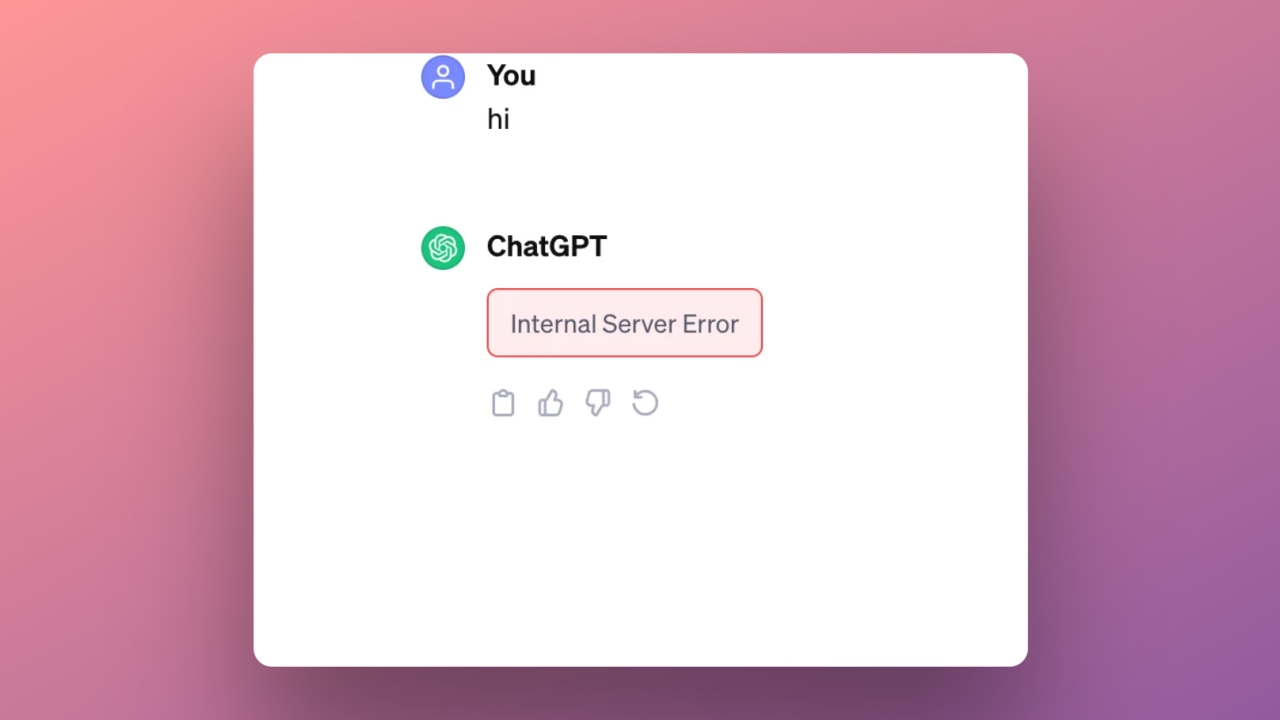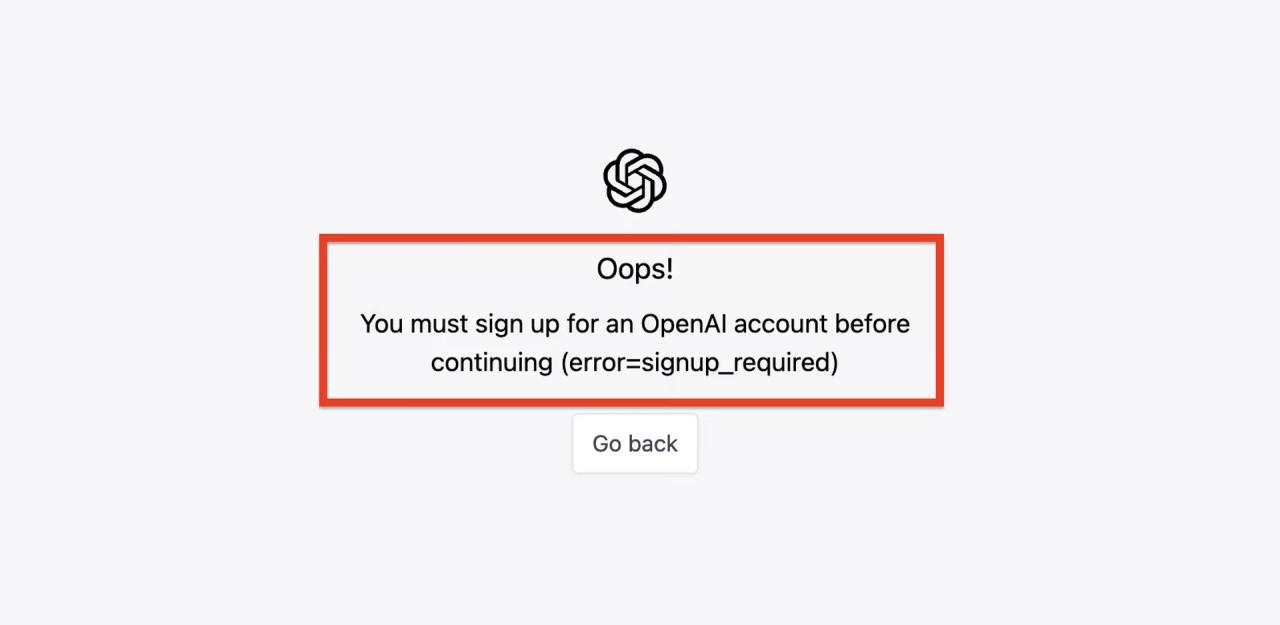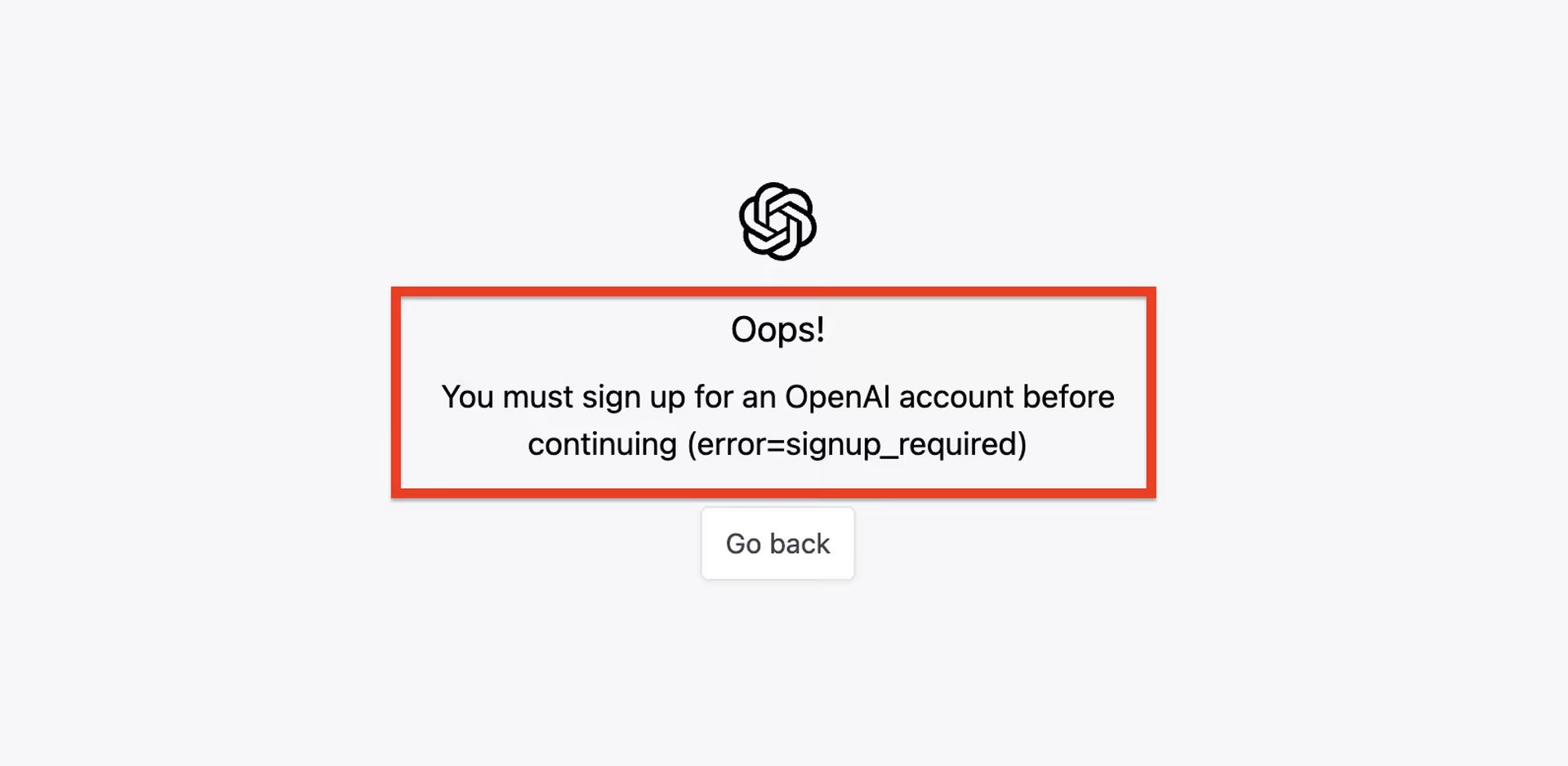Chat GPT Down – it’s a phrase that sends shivers down the spines of millions. This article dives into the world of service interruptions, exploring the causes, consequences, and solutions surrounding these frustrating events. We’ll look at everything from technical glitches to user impact and communication strategies, offering a comprehensive guide to understanding and navigating downtime.
We’ll cover common causes like server issues, network problems, and software bugs, explaining how these affect users and what steps are taken to get things back online. We’ll also explore preventative measures and proactive communication strategies designed to minimize disruption and keep users informed.
Service Interruptions

Service interruptions, or outages, are unavoidable occurrences in any online service. Understanding their causes, impact, and mitigation strategies is crucial for both service providers and users. This section details common causes, typical durations, restoration methods, preventative measures, and a comparison of various outage scenarios.
Common Causes of Temporary Outages
Temporary outages stem from various sources. Hardware failures (servers, network devices), software bugs (in applications or system software), and planned maintenance are frequent culprits. External factors like power outages, DDoS attacks (Distributed Denial of Service), and natural disasters can also contribute significantly.
Typical Duration of Outages
The duration varies widely. Minor software glitches might be resolved within minutes, while major hardware failures or widespread network issues could last for hours or even days. Planned maintenance outages are usually scheduled in advance and communicated to users to minimize disruption.
Methods Used to Restore Service
Restoration involves a multi-step process. This typically begins with identifying the root cause through monitoring systems and diagnostic tools. Next, appropriate actions are taken, such as restarting servers, deploying software patches, or engaging with network providers. Finally, thorough testing is conducted before service resumption to prevent immediate recurrence.
Preventative Measures to Minimize Downtime
Proactive measures significantly reduce downtime. Redundancy (backup systems, multiple data centers), robust monitoring systems, regular software updates, and disaster recovery plans are vital. Load balancing distributes traffic across multiple servers, preventing overload on any single server.
Comparison of Outage Causes and Resolutions
| Outage Cause | Typical Duration | Resolution Method | Preventative Measures |
|---|---|---|---|
| Software Bug | Minutes to Hours | Patch deployment, code rollback | Rigorous testing, code reviews |
| Hardware Failure | Hours to Days | Hardware replacement, system restoration | Redundancy, regular maintenance |
| Network Outage | Minutes to Days | Coordination with network provider, rerouting traffic | Multiple network connections, diverse routing |
| DDoS Attack | Minutes to Hours | Mitigation techniques (firewall rules, rate limiting), collaboration with security experts | Robust security infrastructure, DDoS protection services |
User Impact of Downtime
Service unavailability directly impacts users, leading to frustration, lost productivity, and potentially financial losses. Understanding user experiences and implementing effective mitigation strategies are critical for maintaining user satisfaction and loyalty.
Consequences for Users During Service Unavailability

Users face several consequences. Inability to access services, disruption of workflows, loss of data (if not properly backed up), and missed opportunities are common. The severity depends on the service’s criticality and the duration of the outage.
Frustrations Users Experience
Users commonly experience frustration, anger, and anxiety during outages. Lack of communication from the service provider exacerbates these feelings. Uncertainty about the cause and duration of the outage adds to the stress.
Alternative Solutions Users Might Employ During Downtime
Users may seek alternative solutions. They might switch to competing services, use offline methods, or postpone tasks until service is restored. The availability of suitable alternatives influences user behavior during downtime.
Mitigating Negative User Experiences
Service providers can mitigate negative experiences through proactive communication, timely updates, and transparent explanations. Offering alternative solutions or temporary workarounds during outages can also significantly improve user perception.
User Communication Strategy for Addressing Outages
A comprehensive communication strategy is essential. This involves promptly notifying users of the outage, providing regular updates on progress, and offering estimated restoration times (with caveats for uncertainty). Maintaining consistent messaging across all communication channels (social media, email, website) is crucial.
Monitoring and Detection: Chat Gpt Down
Effective monitoring and detection systems are vital for minimizing the impact of service interruptions. This section Artikels the systems, processes, and procedures involved in detecting and responding to outages.
Systems Used to Monitor Service Health

Various systems monitor service health. These include server monitoring tools (checking CPU usage, memory, disk space), network monitoring tools (tracking network traffic, latency), and application performance monitoring (APM) tools (tracking application response times, error rates). These systems provide real-time insights into service performance.
Process of Detecting Outages
Outage detection involves continuous monitoring of key performance indicators (KPIs). When KPIs fall below predefined thresholds, alerts are triggered, initiating the escalation process. Automated systems can detect and respond to many issues without human intervention.
Escalation Procedures When Issues Arise
Escalation procedures define how issues are handled. This typically involves notifying the appropriate technical teams, escalating to senior engineers or management if necessary, and engaging external support if required. Clear communication channels and defined roles are essential for effective escalation.
Comparison of Different Monitoring Tools and Their Effectiveness
Numerous monitoring tools exist, each with strengths and weaknesses. Some specialize in server monitoring, others in network monitoring, and some offer comprehensive APM capabilities. The choice of tools depends on the specific needs of the service and the budget.
Step-by-Step Guide for Incident Response
- Detection: Monitoring systems detect an anomaly.
- Investigation: Engineers investigate the root cause.
- Resolution: Appropriate actions are taken to fix the issue.
- Testing: The service is tested to ensure stability.
- Communication: Users are updated on the situation.
- Post-Incident Review: The incident is analyzed to identify areas for improvement.
Communication Strategies
Effective communication during outages is crucial for managing user expectations and maintaining trust. This section provides examples of communication strategies for various channels.
Sample Social Media Posts Announcing and Updating Users on an Outage
Example 1 (Initial Post): “We’re currently experiencing a service interruption affecting [affected services]. We’re working hard to resolve this and will provide updates every 30 minutes. #ServiceOutage #Update”
Example 2 (Update): “Update: Our engineers have identified the cause of the outage and are working on a fix. We anticipate service restoration within the next hour. #ServiceOutage #Update”
Email Template Informing Users About Service Disruptions
Subject: Service Interruption Notice
Dear [User Name],
We are currently experiencing a service interruption affecting [affected services]. We are working diligently to restore service as quickly as possible. We anticipate service will be restored by [estimated time]. We apologize for any inconvenience this may cause.
Sincerely,
The [Company Name] Team
Examples of Proactive Communication Strategies to Prevent User Anxiety
Proactive communication includes regularly scheduled maintenance announcements, proactive notifications about potential service disruptions due to external factors, and transparent explanations of the measures taken to ensure service reliability.
Best Practices for Transparent and Timely Communication
Transparency involves honestly communicating the situation, even if it’s uncertain. Timely communication means providing updates frequently, especially during the initial stages of an outage. Using multiple channels ensures messages reach a wide audience.
Importance of Consistent Messaging Across Platforms
Consistent messaging prevents confusion and maintains trust. Using the same language and providing similar information across all communication channels ensures users receive clear and consistent updates.
Technical Aspects of Outages
Understanding the technical causes of outages is essential for developing effective prevention and mitigation strategies. This section explores several common technical factors.
Hey, so Chat GPT’s down again? It’s frustrating, right? Makes you think about other things going wrong, like that crazy drone crash in Paris – totally unrelated, I know, but it’s a similar feeling of unexpected disruption. Anyway, hopefully, Chat GPT will be back online soon; until then, maybe we can all just stare at the ceiling and contemplate the mysteries of life and malfunctioning technology.
Potential Server-Side Issues That Lead to Downtime
Server-side issues include hardware failures (CPU, memory, disk), operating system crashes, database errors, and application errors. These issues can affect individual servers or entire clusters, leading to service disruptions.
Network-Related Problems Causing Service Interruptions
Network issues include network congestion, router failures, DNS problems, and BGP (Border Gateway Protocol) routing issues. These problems can disrupt connectivity between users and servers, causing widespread outages.
Role of Software Bugs in Service Outages

Software bugs, especially in critical system components, can lead to unexpected behavior, crashes, and data corruption. Thorough testing and code reviews are essential to minimize the risk of bugs causing outages.
Potential Security Breaches That May Cause Downtime
Security breaches, such as DDoS attacks or unauthorized access to systems, can disrupt service. These attacks can overwhelm servers, leading to denial of service, or compromise data integrity, requiring system restoration.
How Load Balancing Can Prevent Outages, Chat gpt down
Load balancing distributes incoming traffic across multiple servers. This prevents any single server from becoming overloaded, improving resilience and reducing the risk of outages due to high traffic volumes.
Visual Representation of an Outage
Visual representations help understand the scope and impact of service outages. This section provides detailed descriptions of hypothetical visualizations.
ChatGPT’s down again? Seriously, this is getting annoying. Makes you wonder what else is going on in the tech world – like that weird mystery drone they found buzzing around the power plant. Maybe it’s related? Probably not, but hey, while ChatGPT is offline, at least we have conspiracy theories to keep us occupied.
Back to waiting for ChatGPT to come back online I guess.
Visual Representation of a Service Outage Affecting Different Geographical Locations
Imagine a world map with different regions shaded in varying intensities of red. Darker red indicates complete service outage, while lighter shades represent partial outages or degraded performance. The intensity of the red would correlate with the severity and duration of the outage in each location. This visual immediately highlights the geographic impact of the outage.
Detailed Description of a Graph Showing Service Restoration Over Time
The graph would use a line chart with time on the x-axis and service availability (percentage or binary: up/down) on the y-axis. The line would initially drop to 0% (or “down”) at the start of the outage, then gradually increase as service is restored in stages. The graph would clearly show the duration of the outage and the time taken to reach full service restoration.
Annotations could highlight key milestones in the restoration process.
Flowchart Illustrating the Steps Involved in Resolving a Service Outage
The flowchart would begin with a “Outage Detected” box, branching to “Identify Root Cause,” then to “Implement Solution” (potentially with sub-branches for different solutions). Next, “Test Service Restoration” would lead to either “Service Restored” (end) or “Solution Ineffective” (loop back to “Implement Solution”). Finally, “Post-Incident Review” concludes the process. This flowchart would visually demonstrate the iterative nature of outage resolution.
End of Discussion
Understanding why services go down and how to manage those outages is crucial in today’s digital world. By learning about the technical aspects, user impact, and communication strategies surrounding downtime, we can better prepare for and mitigate the effects of future disruptions. Ultimately, the goal is to minimize user frustration and maintain a positive user experience, even when things go wrong.
Question & Answer Hub
How long do outages typically last?
The duration varies greatly depending on the cause and complexity of the issue. Some outages are resolved in minutes, while others may take hours or even days.
What should I do if the service is down?
Check the service provider’s social media or website for updates. If the outage is prolonged, consider using alternative services or tools.
Bummer, Chat GPT’s down again! Need a distraction? Maybe check out the latest drone tech from dji canada , they often have cool new releases. Hopefully, Chat GPT will be back online soon, but until then, exploring other avenues might be fun.
How can I help prevent future outages?
While you can’t directly prevent outages, you can stay informed about updates and follow the service provider’s advice regarding usage and best practices.
What kind of monitoring systems are used?
A range of tools are used, from basic server health checks to sophisticated AI-powered monitoring systems that detect anomalies and predict potential problems.
